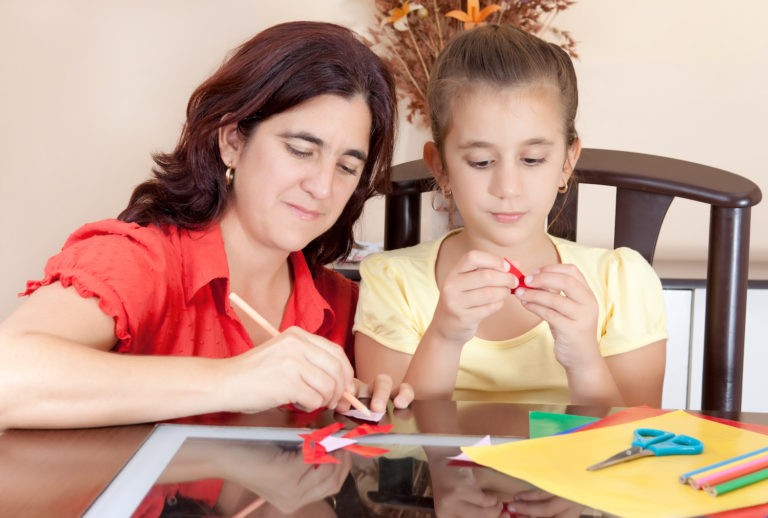What is Project-Based Learning?
Project-based learning, PBL for short, is becoming more and more popular in the world of education. Not only can project-based learning be beneficial at school, it can also be a wonderful way for students to learn at home. So, what is project-based learning? In short, it is when students learn through projects that involve investigating, questioning, researching, and collaborating to produce a product that demonstrates what they have learned. It is a researched- based teaching method that is often more engaging to students than traditional lessons.
Project-based learning might seem intimidating to parents at first, so it is important to support parents and students through this process at home. The following are ways to help support students and parents on their project-based journeys at home.
Ensure Expectations are Clear – and Consider Lowering Them
It’s important for teachers to remember that not all parents and homes are equipped with the same skills, supplies, resources, and technology as school classrooms. For this reason, it is key for teachers to set clear expectations for their students and to insure that these expectations are appropriate and attainable.
To begin, teachers must express to parents that it’s okay not to do everything perfectly. Most parents who work will find it overwhelming to think about facilitating projects with their children. By letting parents and guardians know that perfection is not expected, and that students will be receiving support, teachers can put parents more at ease. Teachers should give parents simple and clear instructions for project-based learning activities and make themselves available for communication throughout the day.
For families that do not have internet access or access to devices, teachers should reassure families that other options are available such as books and art supplies. Many schools will allow students to check-out electronic devices to use at home. If this is possible, teachers should assist students who are in need in obtaining technological devices. Using projects that do not require technology is also an option.
Share Benefits of PBL at Home
Another way to encourage project-based learning at home is to share the benefits of this type of learning with parents and families. Project-based learning offers benefits such as giving students the opportunity to participate in hands-on learning, as opposed to completing mundane worksheets. Additionally, project-based learning gets students excited about learning new information and allows them to take charge of their learning pace and the product they choose to create to show what they have learned.
According to the National Education Association, project-based learning makes learning relevant to students by helping them make connections to life outside of the classroom. Students are able to apply new objectives to real world issues. It also gives students the opportunity to think creatively and to learn in a way that is student-centered.
Explain How Parents can Provide Support
As parents and students begin to participate in project-based learning, it will be important for parents to understand how they can provide support to their child. There are several ways in which parents can be supportive. Setting up a space in the home dedicated to learning is one suggestion. This provides structure for students and gives them a consistent and familiar place to participate in learning each day.
Another way for parents to support students during project-based learning is to become familiar with the term and to research resources and ideas. Here is a guide parents can utilize. This guide explains the basics of project-based learning to parents and describes how this type of learning is student-centered, where students can take ownership of their learning.
Provide Project Ideas
There are so many ideas for project-based learning that can be done at home. For parents that are already busy and new to this type of learning, it would be helpful for teachers to provide them with project ideas. Some ideas include, but are not limited to:
- Eat This, Not That – This activity integrates writing, math, and nutrition by having students research nutritional information about food and describe this information in a product of their choosing.
- Recycling Program – Students can easily start a recycling program at home by researching ways to recycle, recycling materials at home, and showcasing this in a way that they choose. This could be through pictures, blogs, journals, etc.
- Student Podcasts – Students can choose a learning topic, listen to student-friendly podcasts regarding this topic, and create their own podcast that reveals what they have learned.
- Photo Essays – Students can research pictures of topics via the internet or go out into the world and snap some photos. Students can then produce descriptive writing that explains what they have observed.
- Plan a Service Learning Project – Have students choose a cause (animal shelter, homeless shelter, food pantry, etc.), research the cause, participate in providing a service (donate food, serve food, walk animals, etc.), and report back about their experience.
Online project-based learning ideas and resources are widely available to parents and teachers. These ideas are just a click away. Some families, however, do not have access to the internet and it is important for teachers to provide parents with ideas to drive project-based learning at home. Encouraging students and their families to give project-based learning a chance is totally worth it!




